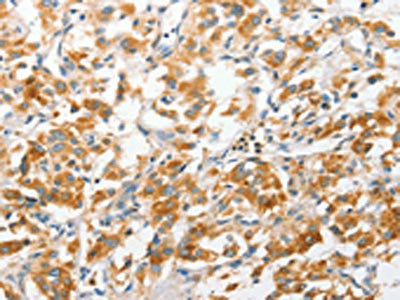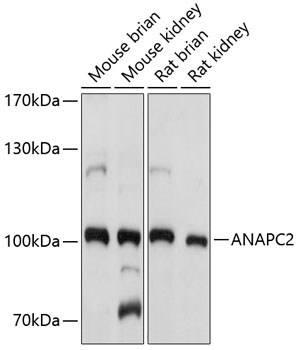
The image on the left is immunohistochemistry of paraffin-embedded Human thyroid cancer tissue using CSB-PA596504(ANAPC2 Antibody) at dilution 1/30, on the right is treated with fusion protein. (Original magnification: x200)
ANAPC2 Antibody
CSB-PA596504
ApplicationsELISA, ImmunoHistoChemistry
Product group Antibodies
ReactivityHuman, Mouse
TargetANAPC2
Overview
- SupplierCusabio
- Product NameANAPC2 Antibody
- Delivery Days Customer20
- ApplicationsELISA, ImmunoHistoChemistry
- CertificationResearch Use Only
- ClonalityPolyclonal
- ConjugateUnconjugated
- Gene ID29882
- Target nameANAPC2
- Target descriptionanaphase promoting complex subunit 2
- Target synonymsAPC2, anaphase-promoting complex subunit 2, cyclosome subunit 2
- HostRabbit
- IsotypeIgG
- Protein IDQ9UJX6
- Protein NameAnaphase-promoting complex subunit 2
- Scientific DescriptionA large protein complex, termed the anaphase-promoting complex (APC), or the cyclosome, promotes metaphase-anaphase transition by ubiquitinating its specific substrates such as mitotic cyclins and anaphase inhibitor, which are subsequently degraded by the 26S proteasome. Biochemical studies have shown that the vertebrate APC contains eight subunits. The composition of the APC is highly conserved in organisms from yeast to humans. The product of this gene is a component of the complex and shares sequence similarity with a recently identified family of proteins called cullins, which may also be involved in ubiquitin-mediated degradation.
- ReactivityHuman, Mouse
- Storage Instruction-20°C or -80°C
- UNSPSC41116161






